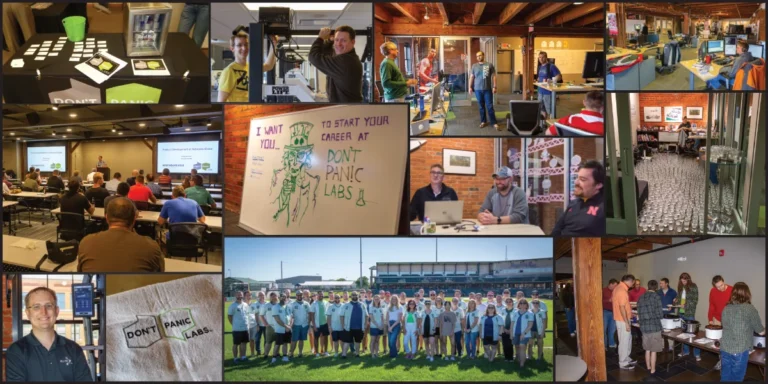
What Makes a Successful Developer Lead? A Guide for Aspiring and New Team Leads
Becoming a developer lead is an exciting step in your career. It’s a role that blends technical expertise with leadership and mentorship, making you the glue that holds your team together. Whether you’re stepping into this position for the first time or looking to refine your approach, here’s a guide to help you navigate the responsibilities and build a thriving team.
1. Build a Team Through Growth
Your top priority as a lead is to foster both the team’s productivity and each individual’s professional development.
- Teach and Mentor: Dedicate time to teach, especially for new team members or complex tasks.
- Understand Skills: Identify each person’s strengths and weaknesses so you can offer tailored support.
- Encourage Self-Tracking: Motivate developers to track their progress and set personal growth goals.
This will likely require new focus and skills than previous roles as your key priority switches from individual contributions to building a successful team and putting the needs of the team ahead of all other priorities. You will want to build both the team as a team and grow the individuals on the team. Helping people learn and grow is the most powerful way to ensure the entire team excels.
2. Keep the Team Moving Forward
Make sure your team stays focused on its goals without unnecessary downtime. Being proactive prevents delays and frustrations.
- Be Available: Promptly answer questions and remove blockers for your team.
- Prepare Work Ahead of Time: Collaborate with developers to clarify tasks before they begin.
- Anticipate Needs: If your team is stuck waiting, productivity suffers. Always stay a few steps ahead to ensure work is ready when they need it.
Rather than spending time developing new code, you should probably focus on documentation, story definition, and answering questions ahead of time. The details and specifics for this work vary based on your developers as well. Very new developers will need much more detail and more dedicated time to help them succeed, whereas more experienced developers can probably do more with less direction. To figure out what each of your developers needs, you will need to spend time getting to know them and working with them to understand how you can adapt to their needs.
3. Emphasize Testing and Quality
Now that you have your team growing and making progress, you are the first line of creating a high-quality product. You want to make sure that everything your team does is as high quality as it can be. If you allow poor quality to come from your team, it will reflect poorly on you as a leader, but it will also lead to frustrations and stresses that you could have prevented.
As Nintendo’s Shigeru Miyamoto has been attributed as saying: “A delayed game is eventually good, but a rushed game is forever bad.” This principle applies equally well to all software development – it’s better to take the time to get things right than to rush out buggy code that will create ongoing problems.
- Prioritize Testing: Advocate for comprehensive test coverage, from unit tests to state-based UI tests, using tools like Playwright.
- Think Beyond the Happy Path: Encourage your team to consider edge cases and unexpected scenarios during development.
- Own QA: Dedicate weekly time to find and fix bugs. Focus on addressing issues before diving into new features.
- Teach a Tester’s Mindset: Help your team view their work through a QA lens, fostering a culture of quality.
- Automate Checks: Constantly look for ways to automate quality, use linters and pipeline processes to catch things before they can become a problem, and allow you and your team to focus on things that cannot be automated.
4. Plan and Design Thoughtfully
Before you ask your team to start work, you want to have a solid understanding of the ask yourself so that you can guide them. This means that you need to try to answer any questions you can find up front as you plan the work your team will do.
- Review Mockups: Dive deep into design mockups, clarifying every detail to avoid assumptions.
- Define Acceptable Criteria: Write out acceptance criteria and scenarios for each task, leaving no room for ambiguity.
- Demand Clear Specifications: Advocate for detailed notes from stakeholders or architects, ensuring your team knows exactly what’s expected.
This is an area that can feel pressure around as there is almost always a desire to move fast, even at the cost of planning. Pushback here is a hard skill to develop, but it is important for your role. If you are being asked to do work that is not clear and defined, it’s going to lead to frustrations for you, your team, and the stakeholders asking you to go fast. Thinking you can “figure it out” as you do the work is a recipe for failure. Pause and get the clarity needed before moving forward.
5. Collaborate with Developers Upfront
Now that you have designed and planned and ideally have a strong understanding of what needs to be done, you need to ensure your developers have the same understanding before they start coding. Ideally, they are able to know before diving into everything they need to know so that they can essentially implement the code on auto-pilot and have that be the least exciting part of their work.
- Encourage Upfront Design: Review designs and detailed plans with your team.
- Break Down Work: Push developers to break tasks into smaller, manageable pieces, ideally what can we reasonably do in a single day.
- Streamline Execution: The better the prep, the easier it is for developers to work “on autopilot.”
6. Master Code Reviews and Pull Requests
Lastly, now that your developer is “done” with their work, you need to review and verify and continue focusing on quality to keep mistakes from making it into your testing environments or beyond. Code review may be the last item on this list, but it’s just as important as everything you have done above.
- Dedicate Time: Block out significant time for reviewing pull requests (PRs).
- Encourage Small PRs: Smaller PRs are easier to review and less prone to errors.
- Require PR Videos: Ask developers to create short videos explaining their work. This often surfaces bugs before the review even begins.
- Involve Architects: For complex or high-stakes PRs, involve architects or other senior team members.
Becoming the Lead Your Team Needs
Transitioning to a developer lead role is a journey. It’s about balancing technical leadership with the human aspects of mentorship and collaboration. When you prioritize your team’s success, foster a culture of quality, and lead with empathy, you’ll create an environment where everyone can thrive.



